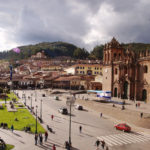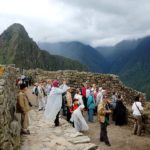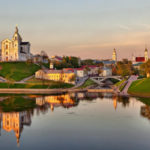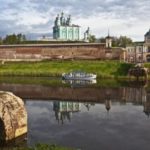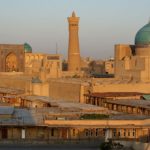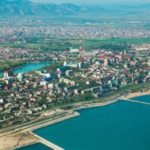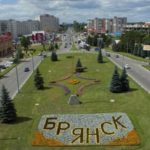Machu Picchu
 In Peru, high in the Andes, almost at the very top of the mountain range from ancient times there is the ancient Inca city of Machu Picchu. This “city among the clouds” during the time of the Inca Empire was secret and inaccessible to ordinary people. In Machu Picchu lived the most important people of the Inca Empire. The supreme rulers of the mighty empire of the Incas took care of their safety and therefore the city was specially built at an unapproachable height above the valley of the Urubamba River.
In Peru, high in the Andes, almost at the very top of the mountain range from ancient times there is the ancient Inca city of Machu Picchu. This “city among the clouds” during the time of the Inca Empire was secret and inaccessible to ordinary people. In Machu Picchu lived the most important people of the Inca Empire. The supreme rulers of the mighty empire of the Incas took care of their safety and therefore the city was specially built at an unapproachable height above the valley of the Urubamba River.
The great ruler of the Inca Pachacutec, anticipating the approaching changes, ordered the city to be erected in such an inaccessible place in order to protect itself and its close ones. And he succeeded. Machu Picchu was built in such a place that it was almost impossible for an unknowing person to reach it. When the Spaniards invaded the empire of the Incas in the 16th century, they never conquered this city.
For a long time, the existence of the “lost city of the Incas” was only legendary. No one in the world knew if he really existed. There are no written references to him anywhere. And only at the beginning of the 20th century, an American, Hiram Bingham, a professor at Yale University, who surveyed these places, reported on its existence. But even after the discovery of Hiram Bingham, for thirty years there were no people willing to visit Machu Picchu. Until the employees of the archaeological expedition working in these places accidentally stumbled upon the ancient Inca Road, which, through the valley, led them to this ancient citadel.
The city itself has a fairly clear structure. From the south-east side of the palace buildings. In the west, the main temple, in which the altar for sacrifices was erected. And opposite the compact residential quarter of two-story houses. In size it is a rather small city. It has about 200 structures. By simple calculations, just over 1000 people lived here.
For those times the city was built very, very competently, and in some places even original. All buildings in the city are made of carefully processed stones, which are so tightly fitted to each other that no solution was needed for their fastening. Moreover, the stones are laid in such a way that there are small gaps between them. This provided the buildings with a unique seismic resistance. Despite the frequent earthquakes in the area, the buildings are perfectly preserved.
One of the largest and apparently most revered buildings is the Temple of the Three Windows. Through these windows, the sun’s rays fall on the inner area. According to the traditions of the Incas, this was part of a certain ritual, and the three windows identify the triplicity of the world. According to an old legend, it was through these three windows that the three founders of the Inca Empire entered the world.
Not far from the temple, a little higher, a building was preserved, which supposedly could serve as an observatory to observe the celestial bodies. It also confirms the presence of a special form of stone, strictly oriented by the sun. The Indians call it the Intivatana or “sun control point.” This is something like a sundial.
Chet structures are made as original dungeons. Since the prisoners were not held here, it seems that women lived in them, the so-called priestesses of the sun, Mamakunas – the chosen virgins. But most likely they were the usual concubines of the supreme rulers. As far as is known, the supreme rulers did not particularly bother with marriage. During the excavations, 173 human skeletons were found, 150 of them female. And in the tomb of the main priest, the remains of a woman with signs of syphilis were found. So, all the studies not only did not reveal, but on the contrary increased the number of secrets of this place hidden from people for centuries.
The builders of the city did not forget about the immediate needs of the inhabitants of the city. Despite the extremely limited area, around the settlement artificially created on the stone slopes of the terrace for growing crops. It was very difficult to do. The terraces are framed in the same hewn of their stone and covered with fertile land. With this, all this is done firmly for centuries. The total area of such artificial fields is more than 5 hectares.
